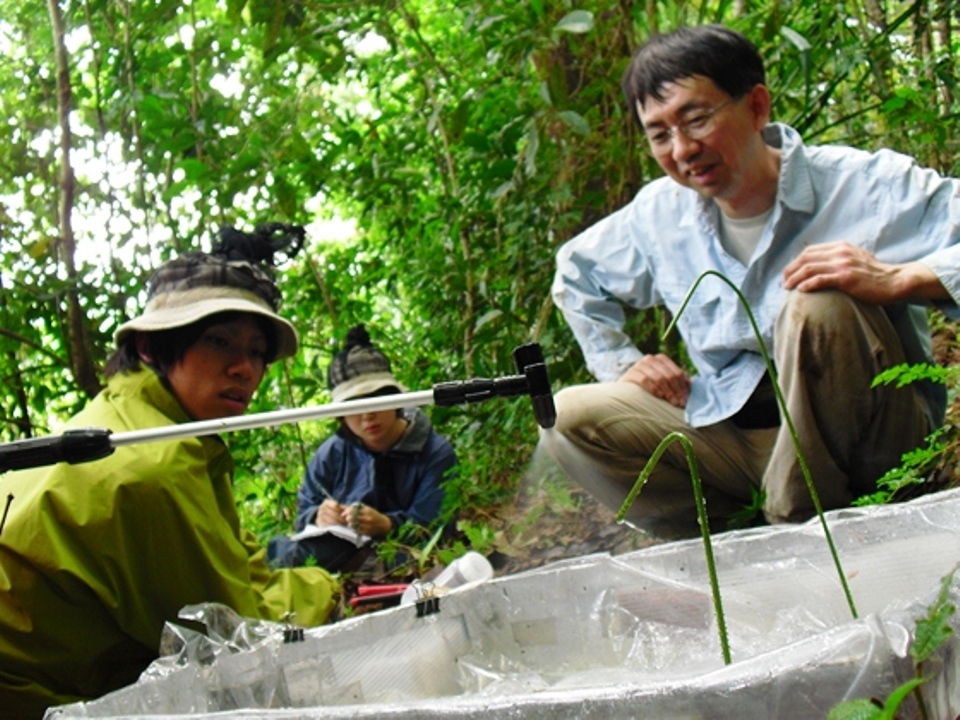
Gunung Walat, Sukabumi – For the umpteenth time, Gunung Walat University Forest (GWUF) has been used as a place for forestry research by foreign students from Japan, such as at this Tuesday, October 5, 2010 until Monday, October 11, 2010.
The research team consisted of a lecturer (Dr. Kosugi Ken) and 3 second-year students (Miho, June, and Takeshi) from Kyoto University. Doctor Kosugi Ken is an assistant professor at Erosion Control Laboratory, Forestry Department, Faculty of Agriculture, Kyoto University. They were studying the hydrology, sedimentation, and groundwater in the GWUF area.
The arrival of a research team from Kyoto University was also through the help of the Dean of IPB Faculty of Forestry, Dr. Hendrayanto, who became a party who helped a lot for the implementation of this research on GWUF. Sumitomo Corporation was a company in Japan that is very concerned about the environment, especially in the forestry sector, which was also the sponsor of this research activity. This was the 4th time Dr. Ken Kosugi at GWUF. The research team from Japan was also accompanied by 4 students from the IPB Faculty of Forestry, that were students of Dr. Hendrayanto.
This research was a continuation of last year’s research that had been conducted in GWUF. The aim of this study was to find a forest management methodology to prevent the danger of sedimentation and flooding. The data obtained from research on GWUF would be compared with the results of research on forests in Japan so that methodological validation could be obtained and would be used as a basis for handling sedimentation and flooding that occurred in the forests of Indonesia and Japan.
Forests in Japan consisted of plants only and there are no wild animals in them in the forests of Indonesia. The forest was used as a protection area by the government. Good cooperation between the government and the community was very good and strong.
According to Dr. Kosugi, the condition of the forests in Japan was very good and maintained because the price of the wood product was cheap so the Japanese were not interested in cutting wood. They preferred to look for other jobs rather than cutting unprofitable wood.
He also added that 50 years ago Japan was in timber crisis to its minimum level, but Japanese public awareness was so high and people began planting trees and this was fully supported by the government which made forestry development in Japan very fast and sustainable.
In Indonesia, timber dependence is very high, making wood expensive because many people are interested in the fantastic economic value of timber. If Indonesia’s forests are not well managed, illegal logging will be increasingly rampant and Indonesia can be ensured will reach the timber crisis as experienced by Japan.
[hap]
Photo gallery click here
Download news click here
